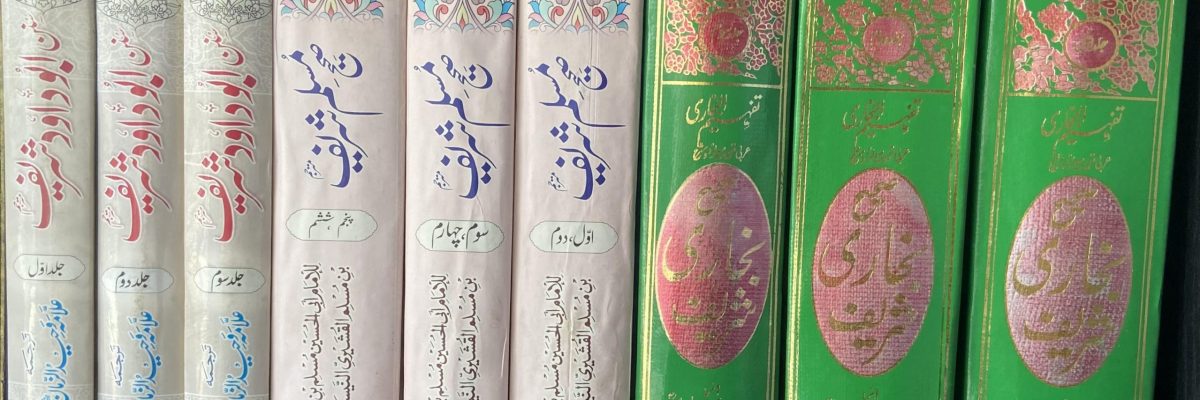Fatwa ID: 05674
Answered by: Maulana Mohammed Haroon Hussain
Question:
Pray and Hope you are in the best of health. Will it be Makrooh to pray Salaah-tul-Esha on its own for a day after praying Salaah-tul-Maghrib and Salaah-tul-Esha together consecutively for many days (due to no valid Esha Shari’ time in the summer)?
In the name of Allah, the Most Gracious, the Most Merciful
Answer:
To answer your question in detail, there are several underlying points that need to be addressed:
- When does Isha time begin?
- Does Isha occur during the summer in certain northern countries?
- How do we calculate Isha time when twilight does not end?
- Can we combine prayers?
Firstly, after the sun sets there remains some redness in the sky which is known as الشفق الأحمر. After this redness vanishes it is replaced by whiteness which is known as الشفق الأبيض. After this whiteness vanishes, there is complete darkness on the horizon and this is known as true night. According to Imam Abu Hanifarahimahullah’smain view[1], Isha time begins when the whiteness vanishes[2]. According to the majority of the other scholars including Imam Abu Hanifa’s most illustrious students, Imam Abu Yusuf and Imam Muhammad ash-Shaybanirahimahumullah, Isha time begins when the redness vanishes[3].
So these are the two historic opinions on when Isha time technically begins.
Secondly, it should be noted that in some countries in the northern hemisphere, the whiteness does not vanish during certain summer months. This has caused the widespread misunderstanding that Isha time does not set in at all. It should be pointed out that, in most countries, Isha time does set in. If the redness does vanish, then according to the majority of scholars, Isha time begins. So, in summer months, if the whiteness vanishing cannot be acted upon, then due to necessity we can refer the beginning time to the redness vanishing[4] which is the preferred opinion of the 2 illustrious students, Imam Abu Yusuf and Imam Muhammad[5] and has been called a later opinion of Imam Abu Hanifa rahimahumullah[6].
Thirdly, the jurist views on the timings of Isha in those places where Isha time is hard or impossible to ascertain can be summarised into 4 methods:
- أقرب الأيام (The closest day) – in this method the timings of the last day in which it was possible to ascertain the correct time will be used
- نصف الليل (Half night) – in this the time between sunset and sunrise will be split into halves. The first half will be considered as Isha time and the second will be considered Fajr time.
- أقرب البلاد (The closest land) – in this method the time will be taken from the nearest country where Isha time can be ascertained.
- سبع الليل (A seventh of the night) – in this method the time between sunset and sunrise will be split into 7 pieces. The first 6 will be considered “night” and one can pray Isha in them. The last 1/7th will be considered as Fajr time.
A number of eminent scholars have written extensively on this topic and you can read the following fatwa by Mufti Tosir sahib which explains them in detail: Fajr and Esha time in Britain – DarulIfta Birmingham. You can refer to How to determine Salah times in extreme latitude – DarulIfta Birmingham, also by Mufti Tosir sahib which will give you a deeper understanding.
In conclusion, I have explained the way to pray Isha in places and times where ascertaining its beginning time is difficult. As you can see, combining the prayers is not an option that the jurists are in favour of. Therefore, our advice would be not to combine your Maghrib and Isha prayers but rather to calculate them according to one of the aforementioned principles. You should be able to refer to your local Masjid and Ulama regarding the method they prefer. Any of the methods of ascertaining Isha time and praying will be correct. As such, the time you delayed Isha and prayed it separate from Maghrib was closer to the correct method and the times you combined them was incorrect.
According to the Hanafi School, actually combining “الجمع الحقيقي” of prayers is not permissible. Apparently combining “الجمع الصوري” is permissible in times of need and this means to delay one prayer until the end of its time and hasten the next prayer to the start of its time. Both prayers will still be prayed in their respective times.
Only Allah knows best
Written by Maulana Mohammed Haroon Hussain
Checked and approved by Mufti Mohammed Tosir Miah
Darul Ifta Birmingham
[1]وهو الحمرة عندهما وبه قالت الثلاثة واليه رجع الامام كما في شرح المجمع وغيرها فكان هو المذهب
ص 130 – جلد 2 – أحسن الفتاوى – ايچ ايم سعيد كمپني – كراتشي
[2]قال ابو حنيفة رحمه الله تعالى الحمرة أثر الشمس والبياض أثر النهار فما لم يذهب كل ذلك لا يصير ليلًا مطلقًا. وقولهما أوسع للناس وقول أبي حنيفة رحمه الله تعالى أحوط
ص 32 – جلد 2 – البناية في شرح الهداية – المكتبة الحقانية
[3]ثم الشفق هو البياض الذي في الأفق بعد الحمرة عند أبي حنيفة – رحمه الله -، وقالا: هو الحمرة وهو رواية عن أبي حنيفة وهو قول الشافعي – رحمه الله – لقوله – عليه الصلاة والسلام –”الشفق الحمرة” ولأبي حنيفة – رحمه الله – قوله – عليه الصلاة والسلام –”وآخر وقت المغرب إذا اسود الأفق” وما رواه موقوف على ابن عمر – رضي الله عنهما – ذكره مالك – رحمه الله – في الموطأ، وفيه اختلاف الصحابة
ص222 – العناية شرح الهداية – باب المواقيت
ص 78 – جلد 1– باب المواقيت – الهداية – المكتبة الرحمانية
[4]ووقت المغرب منه الى غيبوبة الشفق وهو الحمرة عندهما وبه يفتى هكذا في شرح الوقاية وعند أبي حنيفة الشفق هو البياض الذي يلي الحمرة هكذا في قدوري
ص 57 – جلد 1 – كتاب الصلاة – الفتاوى الهندية – دار الكتب العلمية لبنان
[5]وفي البحر الشفق هو البياض عند الامام الى ان قال فثبت أن قول الامام هو الاصح… ولا يعدل عنه الى قولهما الا لضرورة
ص 359 – جلد 1 – كتاب الصلوة – فتاوى عثماني – مكتبة معارف القرآن كراتشي
ص 24 – جلد 2 – كتاب الصلوة – رد المحتار – دار الحديث القاهرة
[6]وقد جاء عن أبي حنيفة أنه رجع عن قوله وقال: انه الحمرة لما ثبت عنده من حمل عامة الصحابة الشفق على الحمرة وعليه الفتوى
ص 67 – الجزء الأول – اللباب في شرح الكتاب – دار الحديث القاهرة

